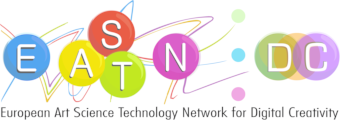ABSTRACT
Summary:
Technological advancements allow real-time recording of user response to stimuli, evaluating reaction and responsiveness. This paper examines low-cost measurement and VR equipment, in the scope of visual arts and psychology, especially brain-tracking technologies, analyzing the results of an empirical study of a neurofeedback VR application and the adopted prototype framework.
Objective:
The aim is to present and review the state-of-the-art in the field of brain tracking and VR tools for capturing user response that can be utilized in visual arts and psychology. The survey focuses on different low-cost brain-tracking EEG mechanisms, the validity of their outcome and their synergy with other software for constructing a VR solution.
The usage of VR in different psychological domains (i.e. neuropsychological research, clinical research) has increased significantly the last twenty years (Gregg & Tarrier, 2007, Wilson & Soranzo, 2015). VR in psychological research helps to study human behavior (i.e. spatial cognition, motor control, social interaction, anxiety disorders, visual perception, psychotherapy) (Brahnam & Jain, 2011, Schnall, Hedge, & Weaver, 2012). It allows multiple stimuli that the researcher can create, control and conclude how each affects the subject. By utilizing brain-tracking technology alongside VR, it is possible to record and analyze responses of stimuli on users, observing the brain mechanisms and the processes that take place (Kontson et al., 2015).
At the intersection of art and science, there is the field of psychology of art and the emerging discipline of neuroaesthetics. There is a dialectic relationship between the questions posed by art and science (Zeki 1999). An increasing interest is observed in utilizing cognitive science in art, widening existing fields of research (Century et al., 2013). Art as an expression, as a human behavior, involves a number of cognitive processes; for the artist (i.e. emotions, creativity) but also for the viewer (i.e. emotions, visual-auditory perception, memory) (Donald, 2006, Pelowski, Markey, Lauring, & Leder, 2016).
The widespread availability of low-cost tracking systems enables various communities to contribute research to the above interdisciplinary field. Equipment such as physiological devices, biofeedback equipment and eye-tracking technology can accompany those studies.
This equipment crosses and can be utilized in the field of visual arts and that of psychology. By utilizing brain-tracking technology, it is possible to identify the involved brain mechanisms and responses to stimuli (Kontson et al., 2015). In this context, an empirical study of a VR application is described that tracks brain activity of the user in real-time, processes and filters the EEG signals in real-time and corresponds to the user’s input by altering the VR environment according to one’s state, as part of a larger study involving the impact of images to a subject.
Method:
A detailed literature review is conducted in order to trace the usage of VR and technological tools in capturing and evaluating user response in the scope of visual arts and psychology. Low-cost mechanisms and brain tracking equipment are studied by conducting a comparative study that is presented.
A prototype framework on the potential of these low-cost equipment tools for research is presented along with the challenges of utilizing this technology and the synergy between associated tools and software.
Also, a neurofeedback system in which a visual stimuli VR system tracks and responds to a user’s state, was created. The research material produced, the quality of recorded data, the methodology that was formed, the process of filtering and analyzing signals real-time and the given results are analyzed.
Conclusion:
VR tools alongside brain-tracking mechanisms are a challenging and promising field for creating new modes of interacting and recording stimuli response both from the scope of art and psychology (Kontson et al., 2015, Marín-Morales et al., 2019).
However, conclusive results prove challenging due to difficulties in data acquisition and analysis, implementation across different devices and software or due to the erratic nature of some signals such as EEG (Accoto et al., 2021). Based on the conducted research and the Brain Computer Interface application that was created, there appears to be a considerable interest in the assessment of data in real-time and in a continuous effort to obtain even more accurate information through the constant evolution of low-cost equipment in order to study the generated behavior of the subject. The research in the intersection of psychology and art is a growing field that alongside the continuous technological advancements could give a better understanding of our comprehension of the interactions, responses, experiences and even perceptions of the user that may occur during exposure to various stimuli (Tinio & Smith, 2014, Leder & Nadal, 2014).
Back
“Reflections: Bridges between Technology and Culture, Physical and Virtual”
is supported by:






